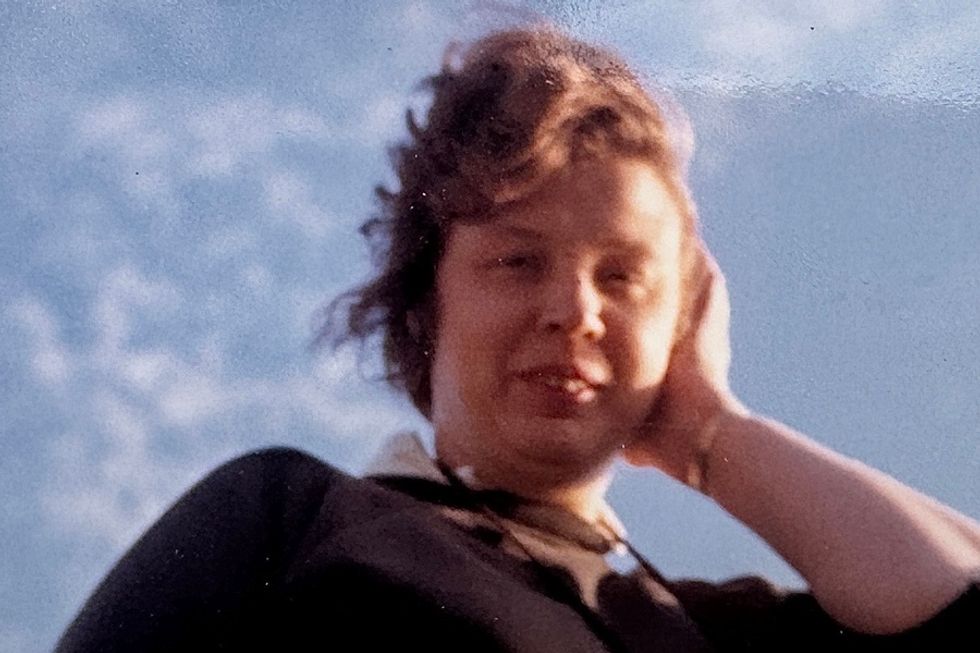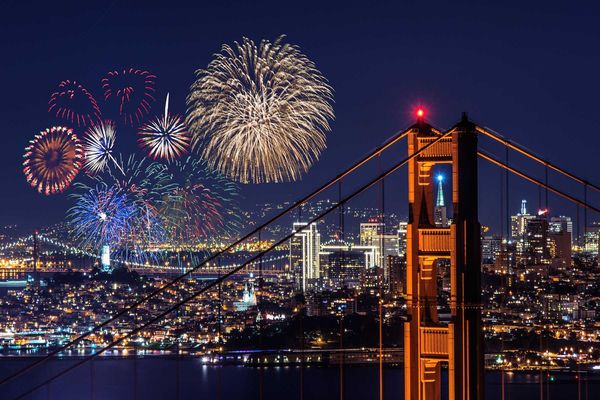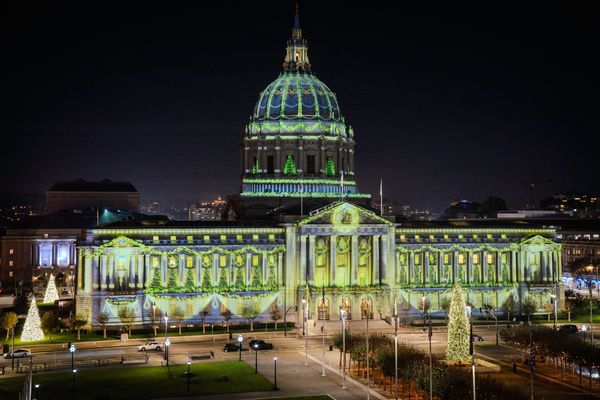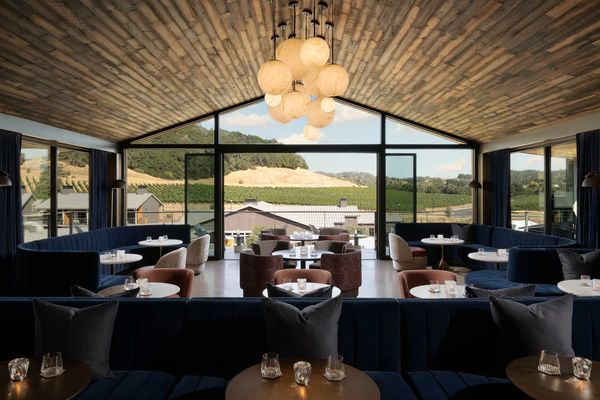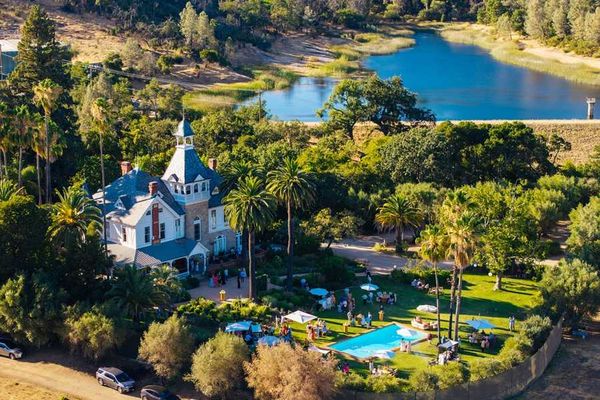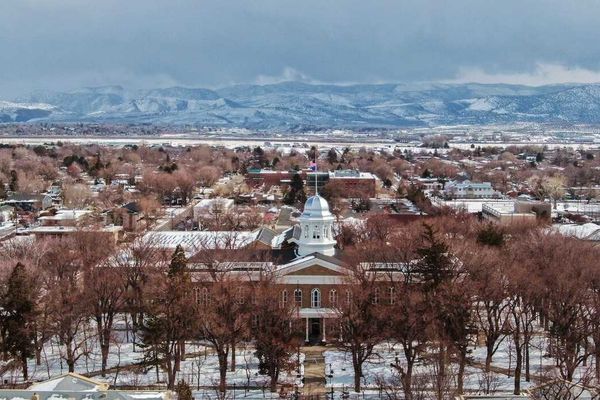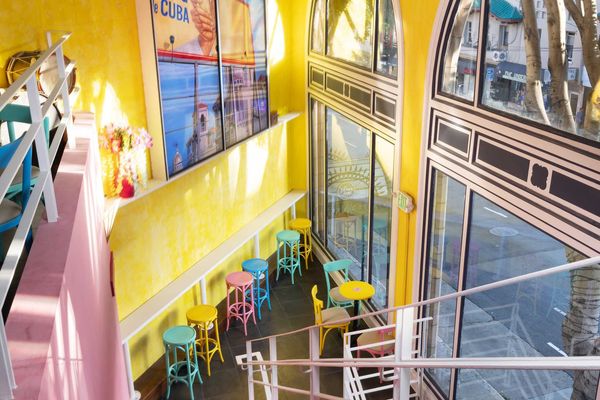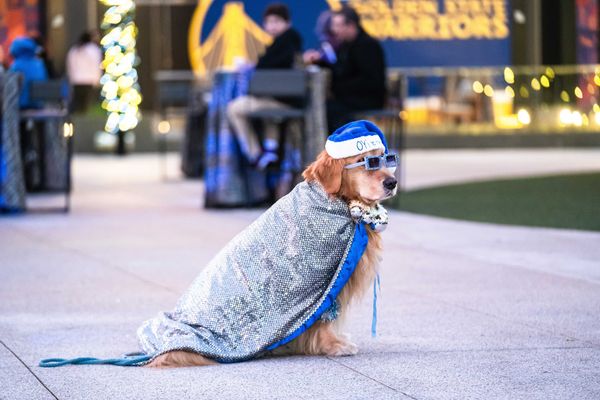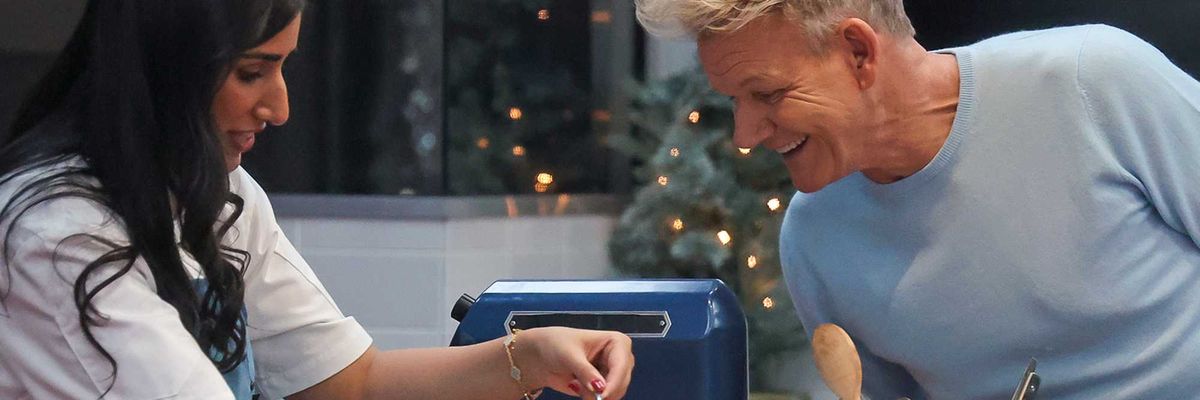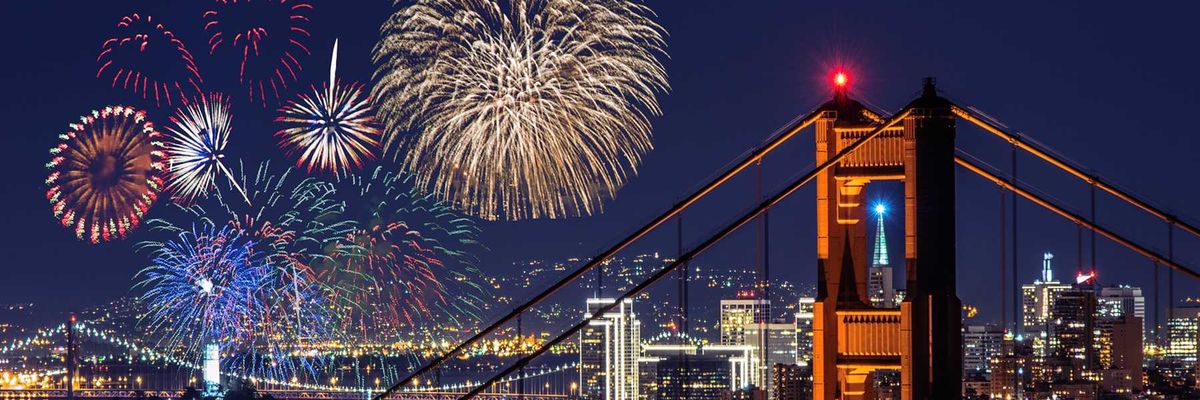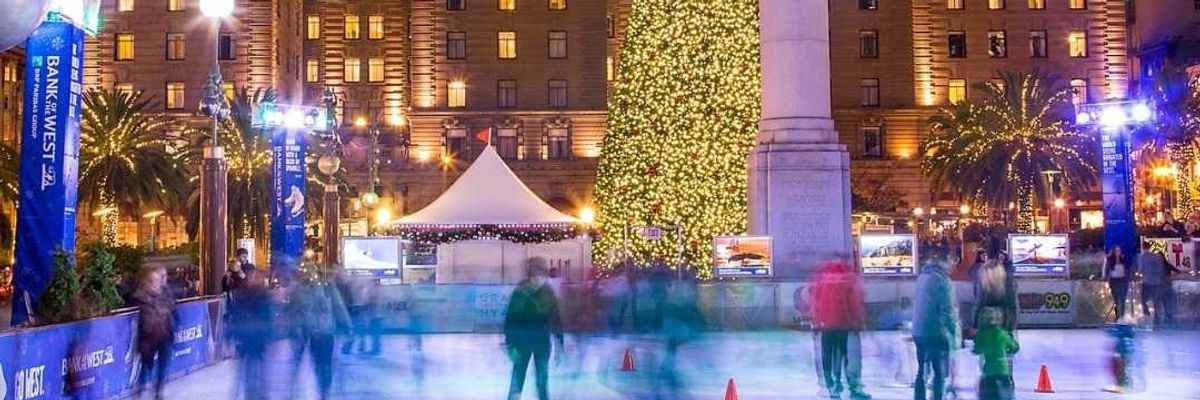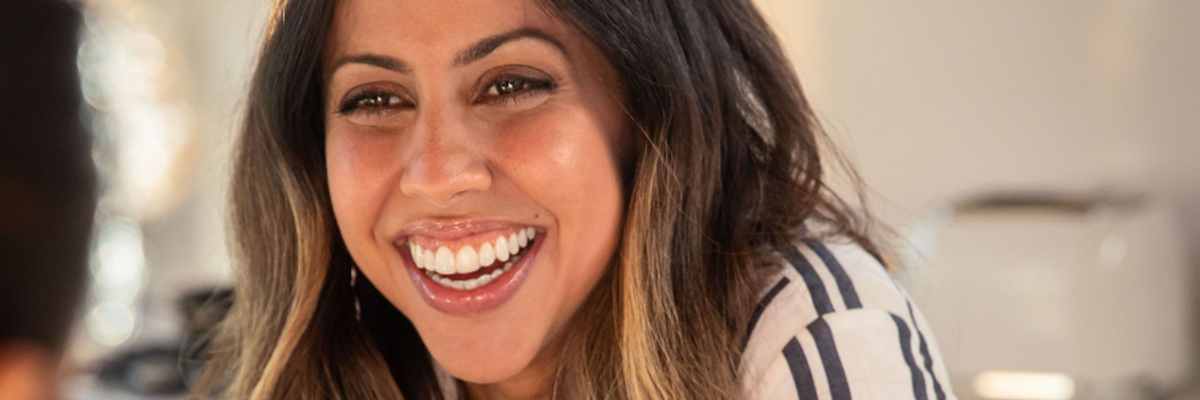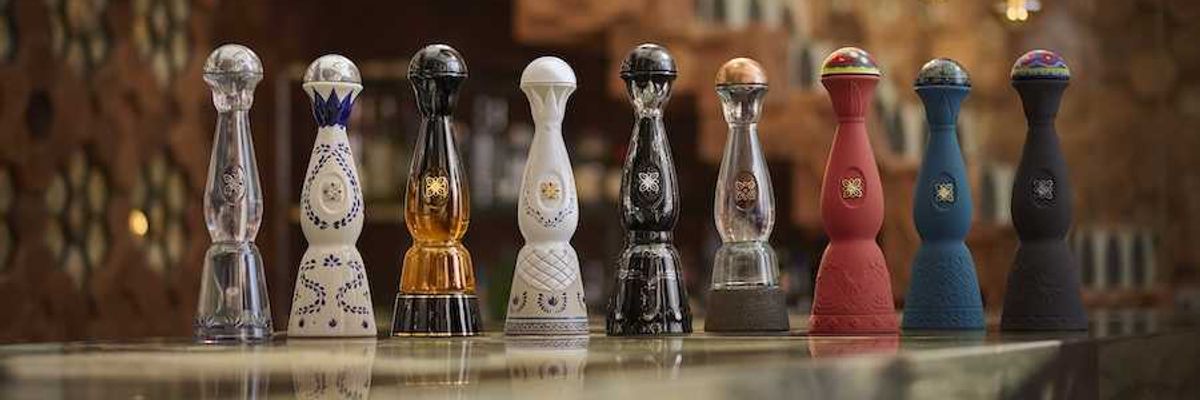Only one artistic style has ever officially originated in San Francisco.
The art world calls it Bay Area Figurative, a movement that began taking off around the same time Abstract Expressionism was emerging in New York—a kind of “revolution” among the avant-garde, in which local artists started to transform from more traditional figurative work to fully abstract, non-objective work—nothing you could recognize from the real world, with a lot of texture, energy,” says Rob Delamater, co-owner of the Lost Art Salon in the Mission.
A few years after it began, some of those Bay Area artists “turned back to the figure,” bringing to it “all of those techniques they learned in abstract expressionism,” Delamater continues. By the 1950s, a new sort of school had emerged, centered around the now-defunct San Francisco Art Institute in North Beach.
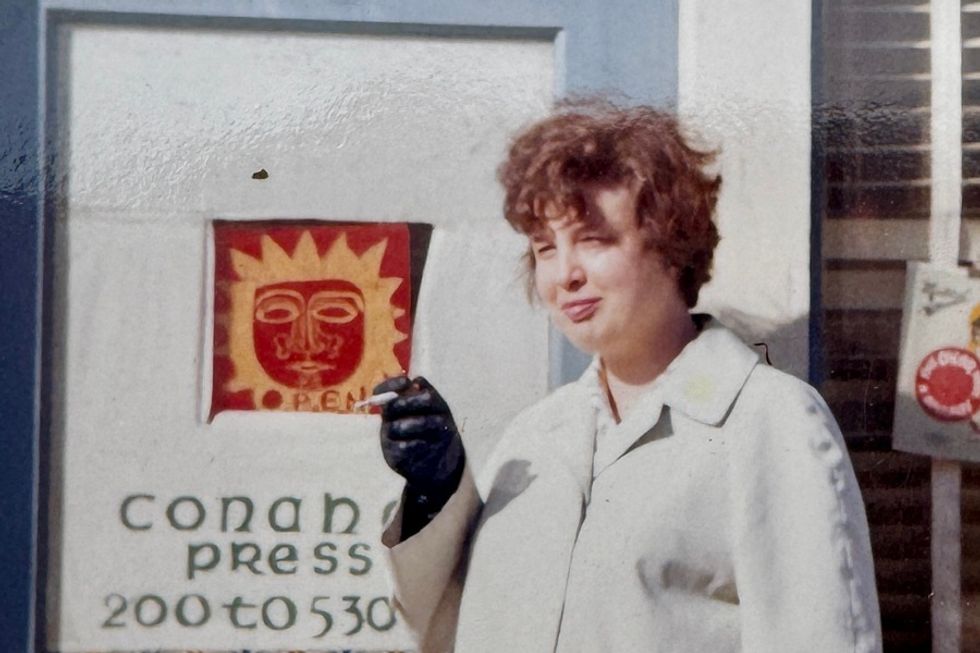
Alysanne McGaffey arrived in San Francisco just as the Bay Area Figurative Movement was taking shape. Enrolled in the Art Institute, she became immersed in the neighborhood’s creative renaissance, one that was in direct conversation with the simultaneously developing Beat poetry and freeform jazz movements. McGaffey’s work evolved rich and resonant, compositions comparable to more famous Bay Area Figurative “First Generation” artists like David Park, Richard Diebenkorn, and Wayne Thiebaud.
But in the mid-20th century—as they had been throughout history—women artists were often skipped over in favor of their male peers. Meanwhile, there wasn’t yet a market for avant-garde art in San Francisco. McGaffey received some recognition (including solo shows in 1962 and 1968), but her gender and sexuality were obstacles to greater notoriety. Though she continued to paint prodigiously, her work “kind of fell through the cracks,” says Delamater.
Then, about 15 years ago, McGaffey made a call to the Lost Art Salon, a gallery that specializes in reintroducing forgotten artists to contemporary audiences: “kind of a cross between a museum, a library, and a commercial gallery,” Delamater explains.
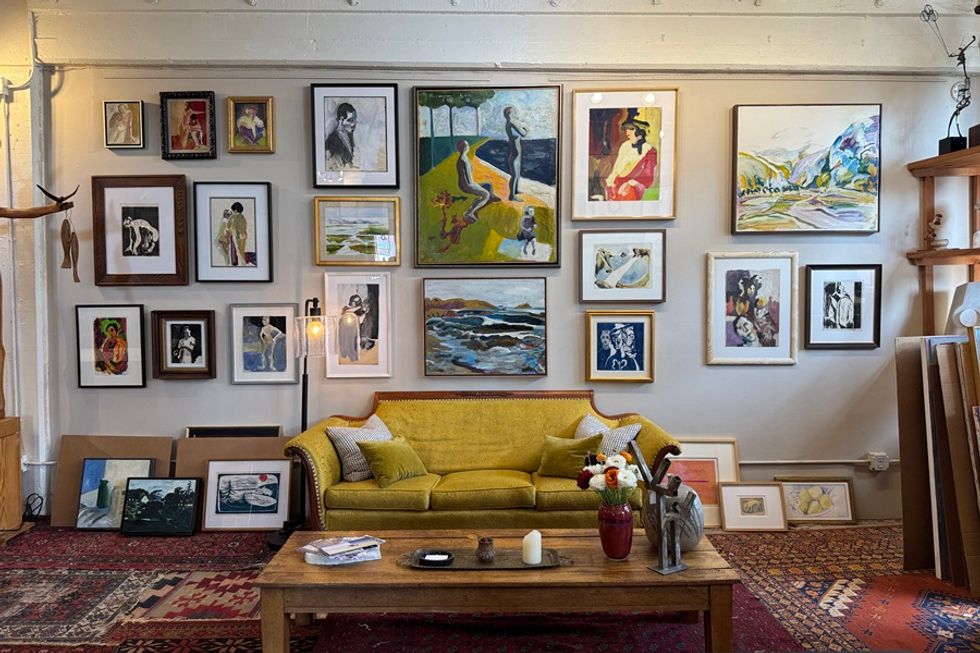
Unlike most art galleries, the collections he and co-owner Gaetan Caron purchase—they currently have about 125 of them, consisting of 12,000 original pieces of artwork, many from Bay Area artists—remain at the Salon until they’re sold. “We are still actively showing and selling pieces or collections we bought 20 years ago,” he says.
Most of the time, Delamater and Caron rediscover forgotten work following an artist’s death: Claude Seavey, a commercial illustrator who lived a bohemian life on Telegraph Hill in the 1920s and ‘30s; Hubert Crehan, a Bay Area Abstract Expressionist/Figurative painter and art critic who began at the Art Institute in the late 1940s; Michael di Cosola, a Chicago abstract surrealist painter who “fell in love with a boy” and moved to San Francisco in the 1950s.
McGaffey was different. When they found her—or, rather, when she found them—she was elderly but very much alive, still creating not just paintings but also woodcuts and linocuts in Pacifica. “She came to us to visit and brought slides of her work and all of these things that were underneath her bed,” remembers Delamater. Over time, they learned that there was more—much more—so that it filled an entire extra room and the garage.
Rediscovered Bay Area Figurative Artist, Alyssane McGaffey
(Courtesy of Lost Art Salon)
1960s Bay Area Figurative Oil by Alyssane McGaffey
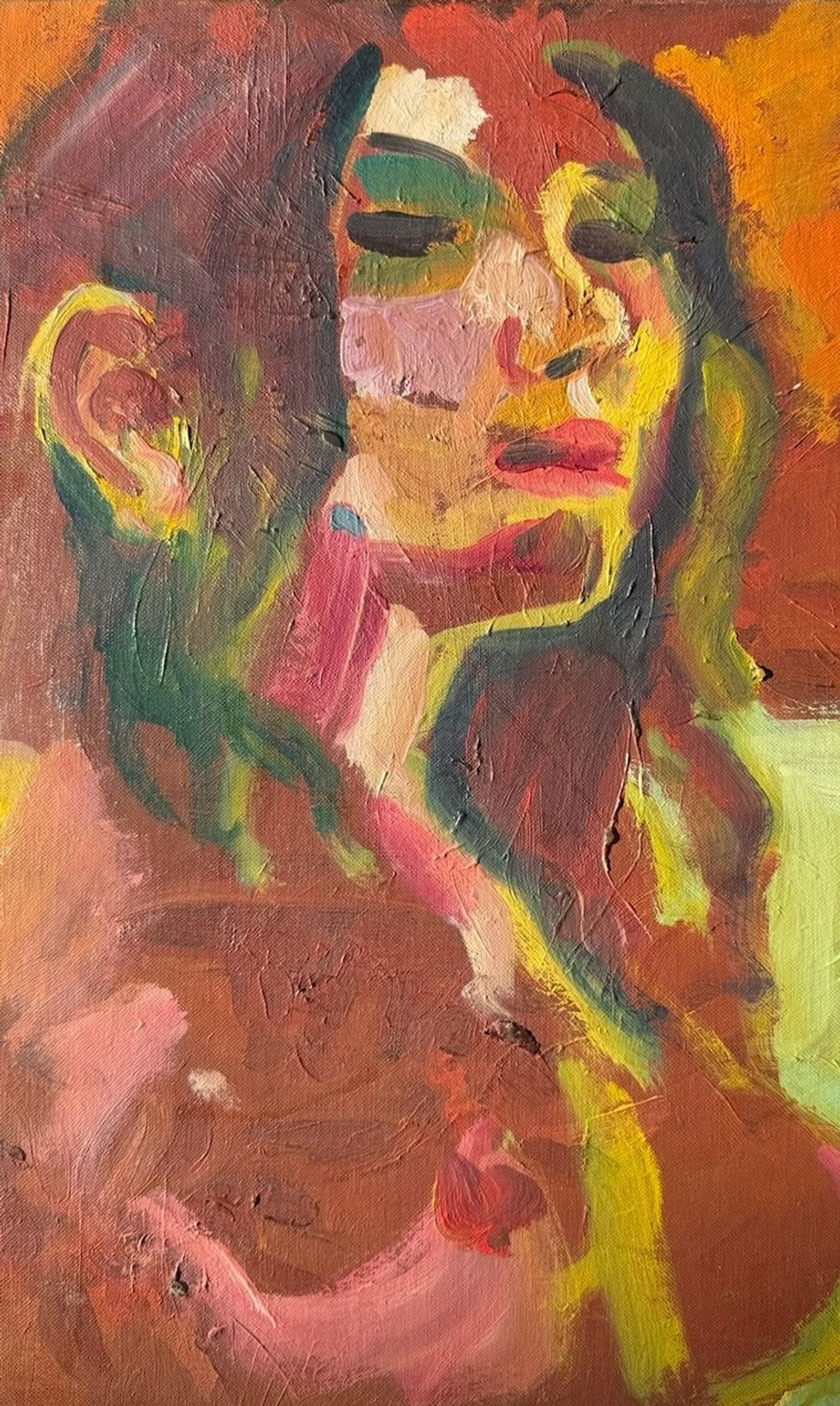
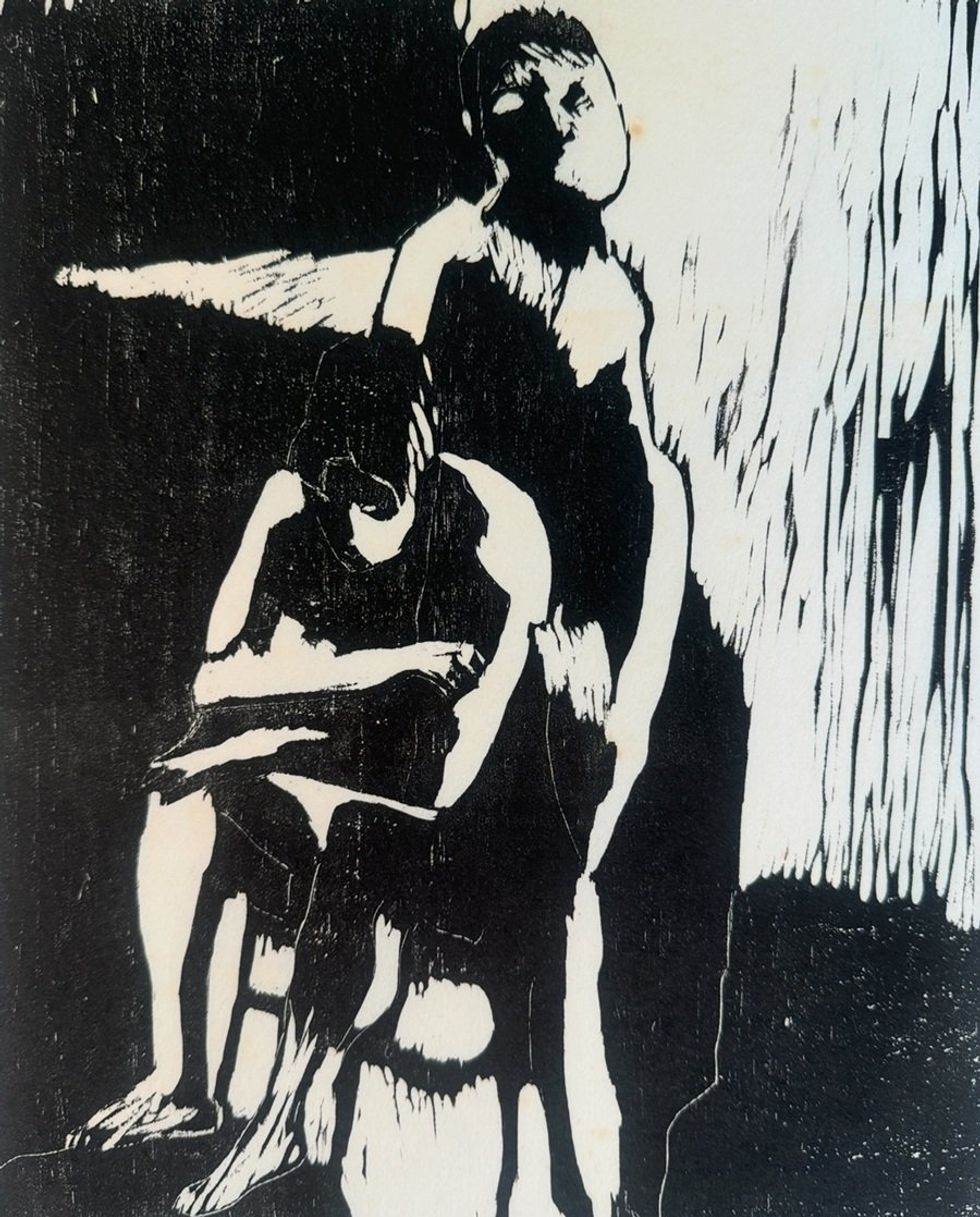
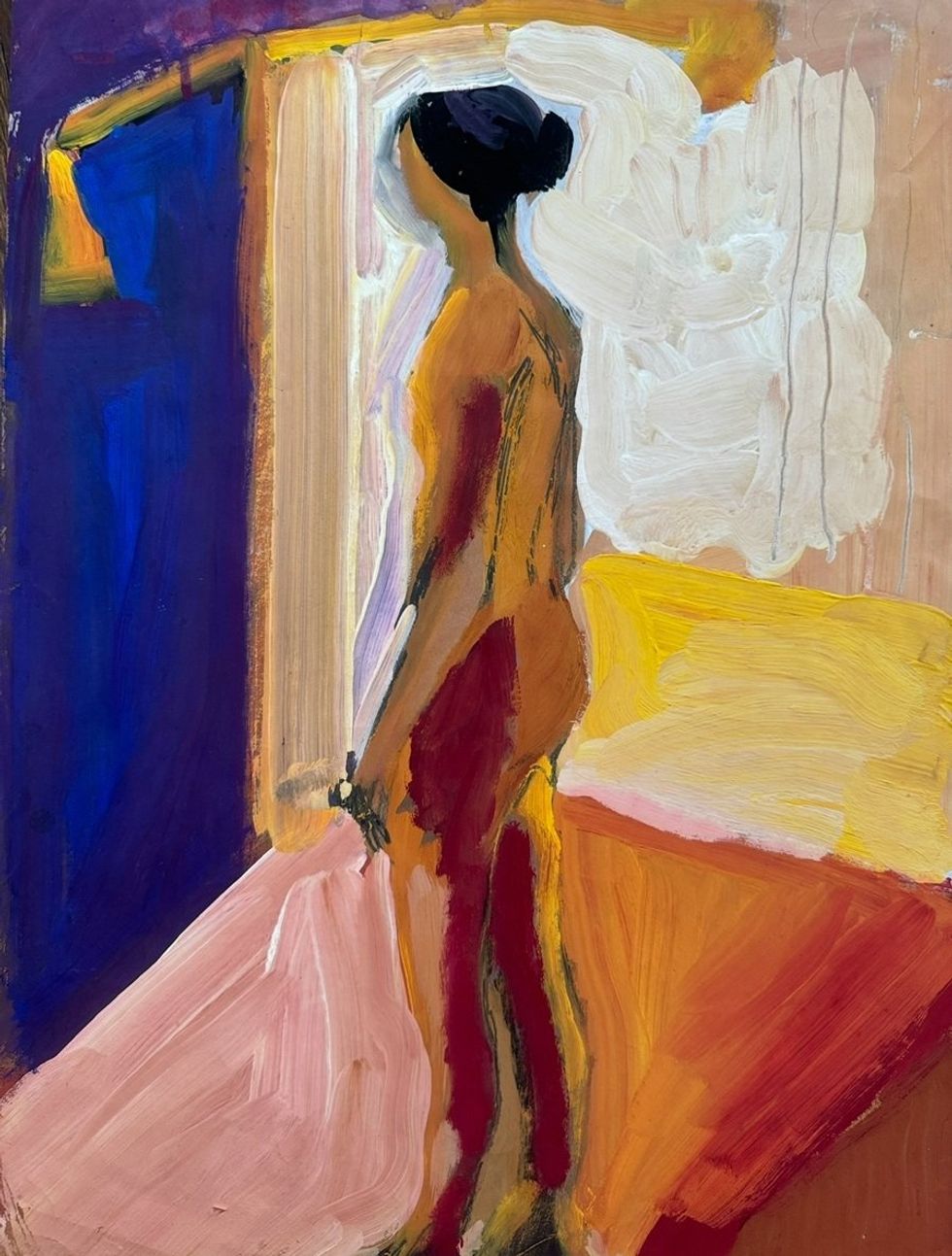
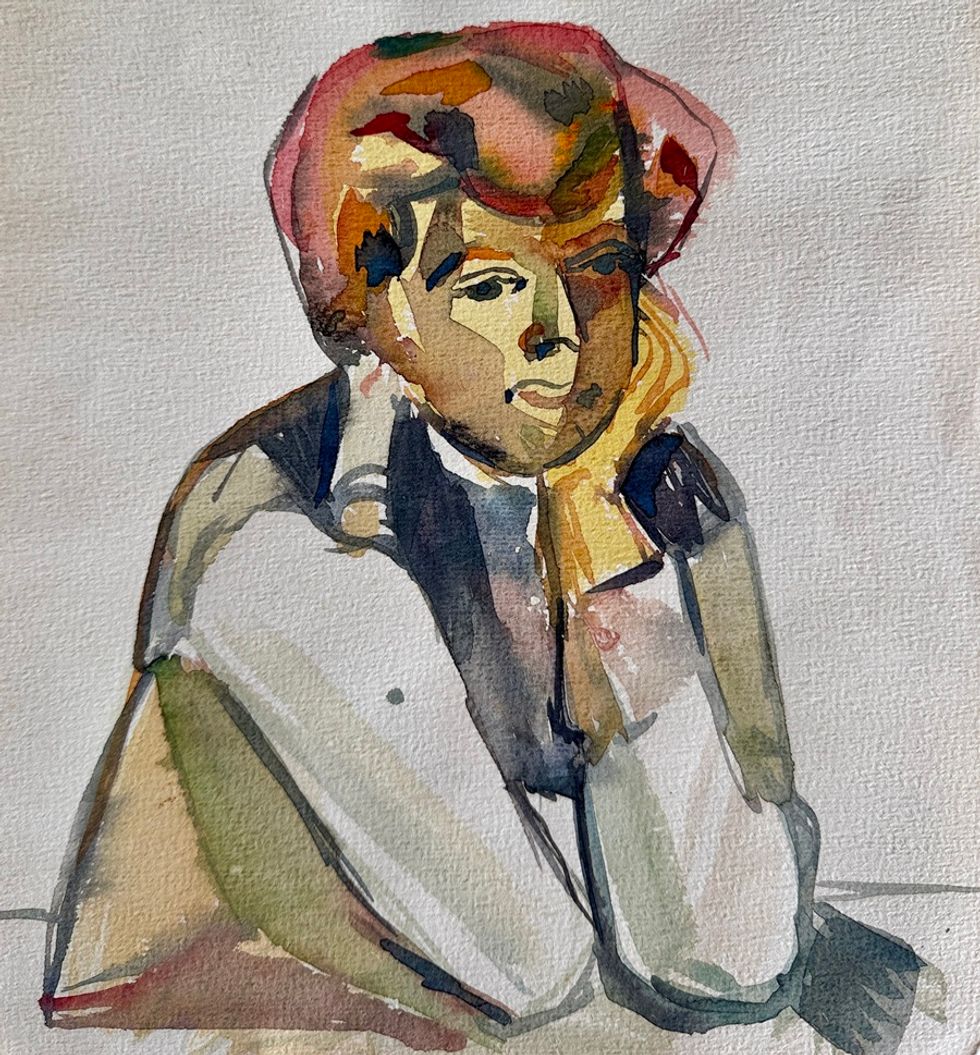
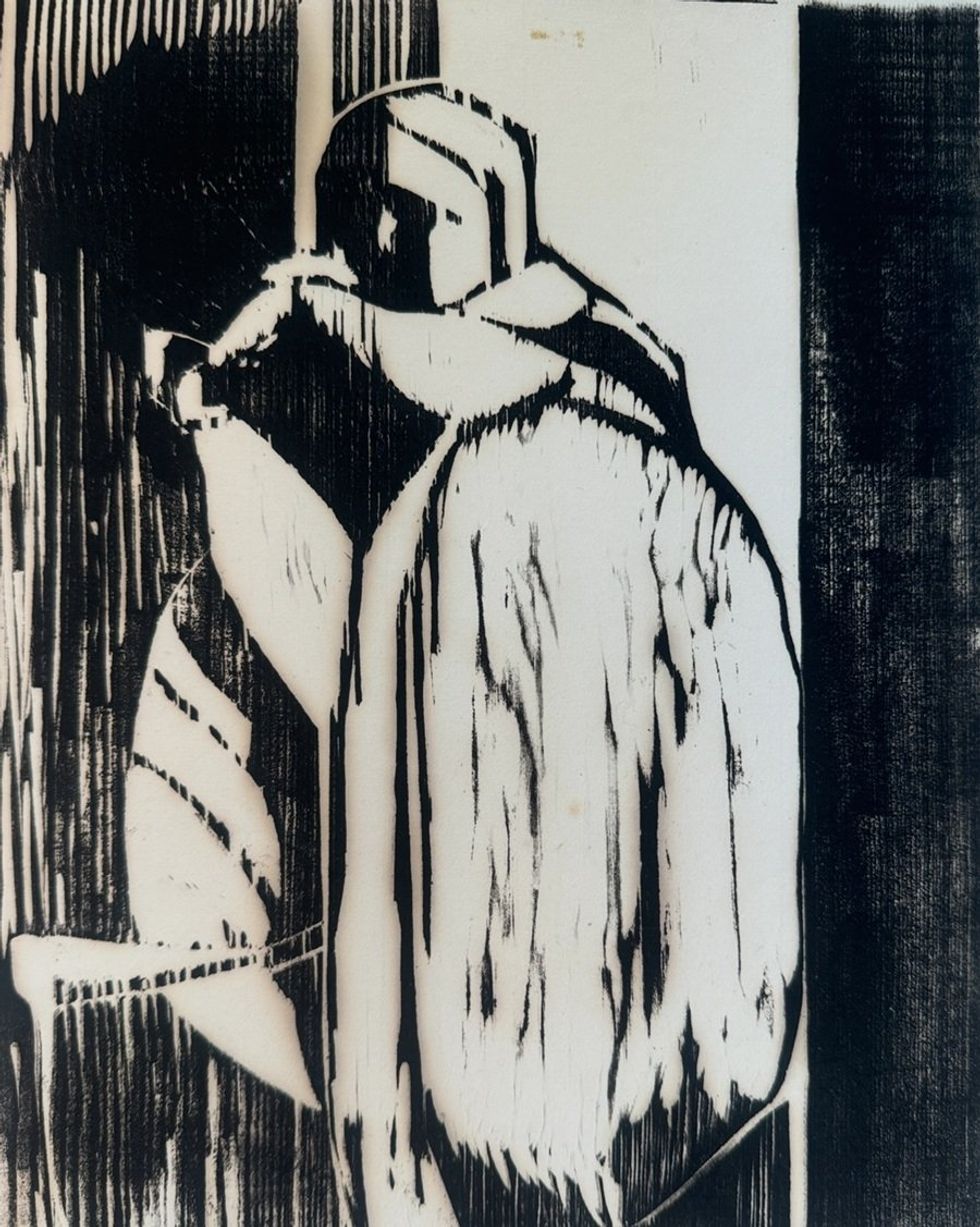
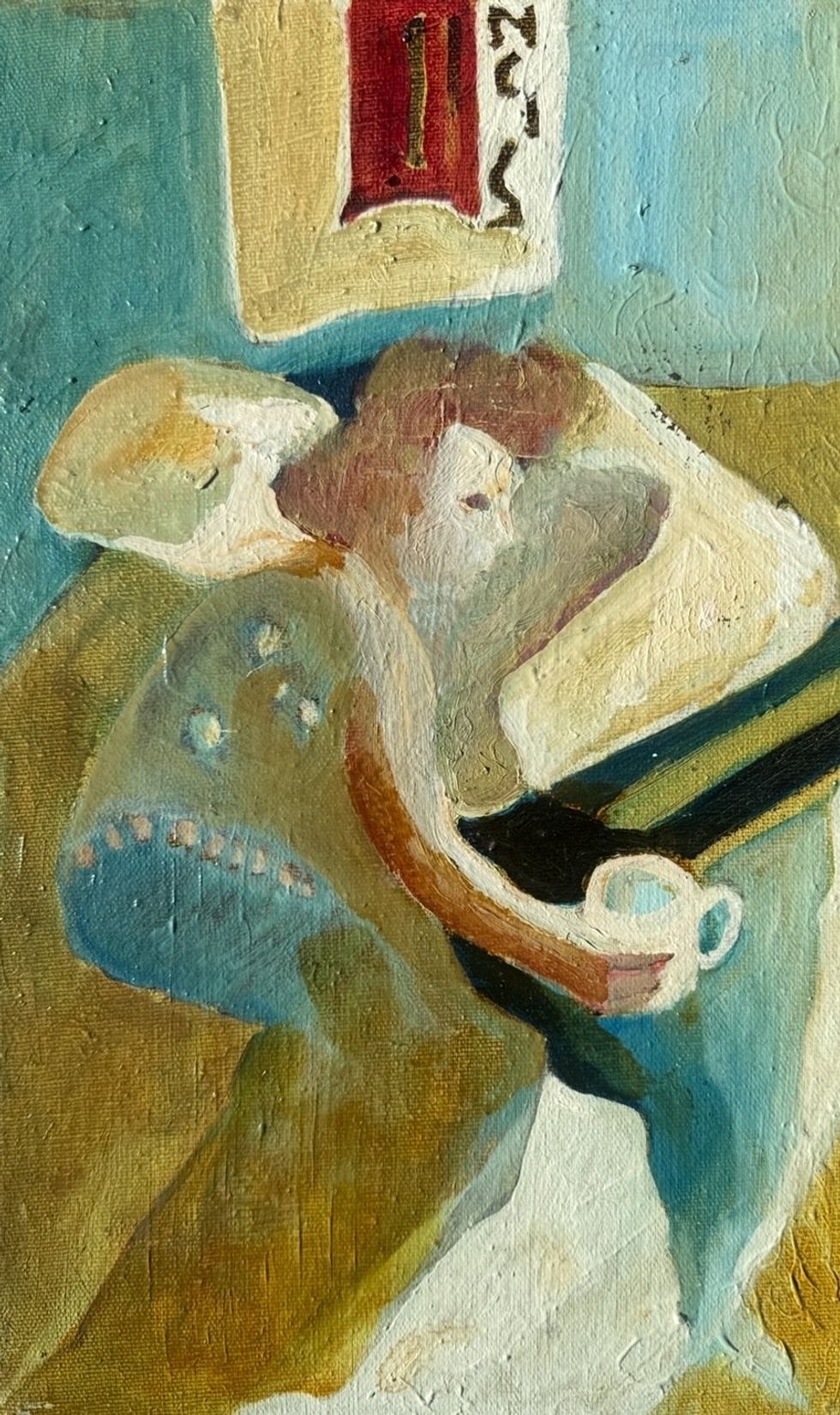
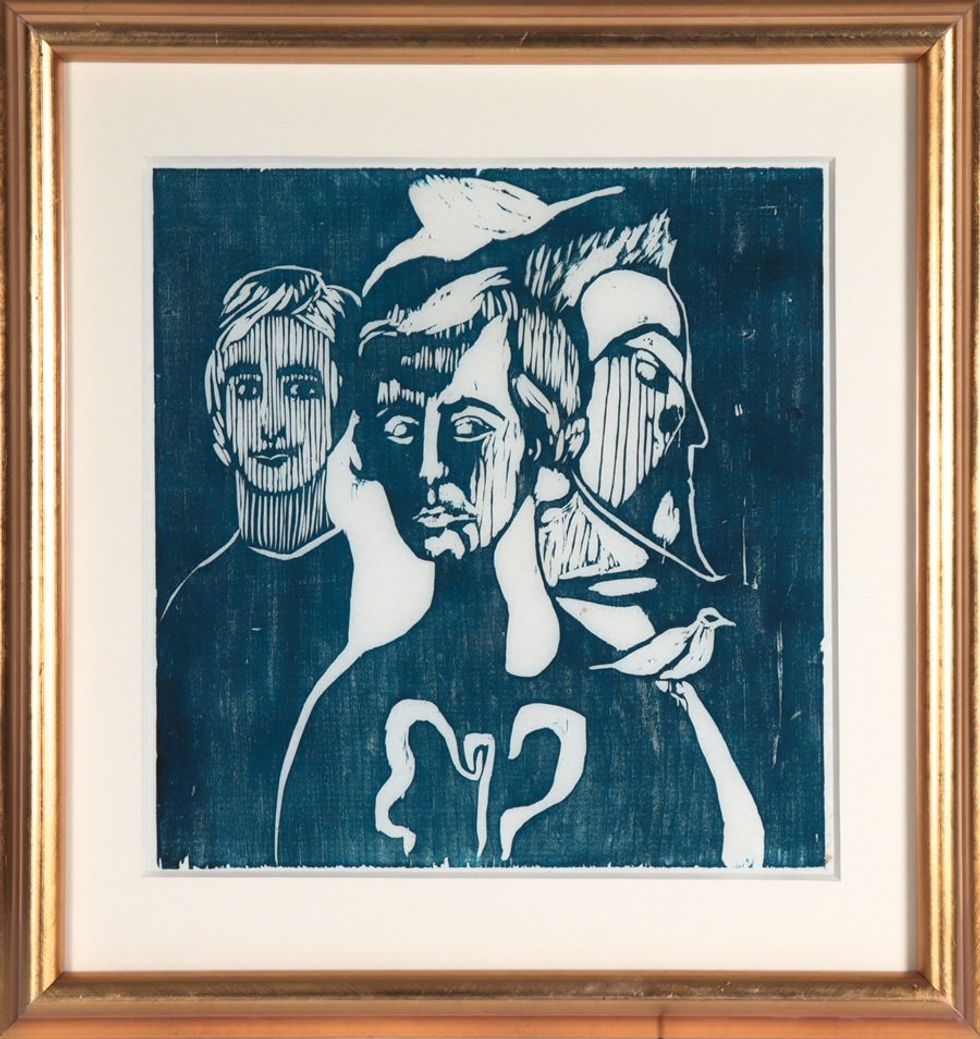
“We could tell how good her work was and how [her anonymity] wasn’t a result of it not being on par with other successful names at the time, but the limited opportunities that there were.” They acquired several of her paintings and “were really successful with them—which was incredible for her, that she saw success in her lifetime,” Delamater says.
While most of McGaffey’s earlier works, largely abstract oil paintings of human figures, are firmly ensconced in the Bay Area Figurative Movement. In her later years she gravitated more toward landscapes and watercolors but “still painted in that looser style that had aspects of the Figurative, [creating work] that felt much more like capturing a moment on the coast,” says Delamater.
“She had originally come from the Seattle area, out on the coast, and there was a tradition in Seattle of this mystic relationship to nature. I think as she aged, she was really connecting with nature and seeing her future going back to dissolving into the dust… I see that a lot in artists in their later years.”
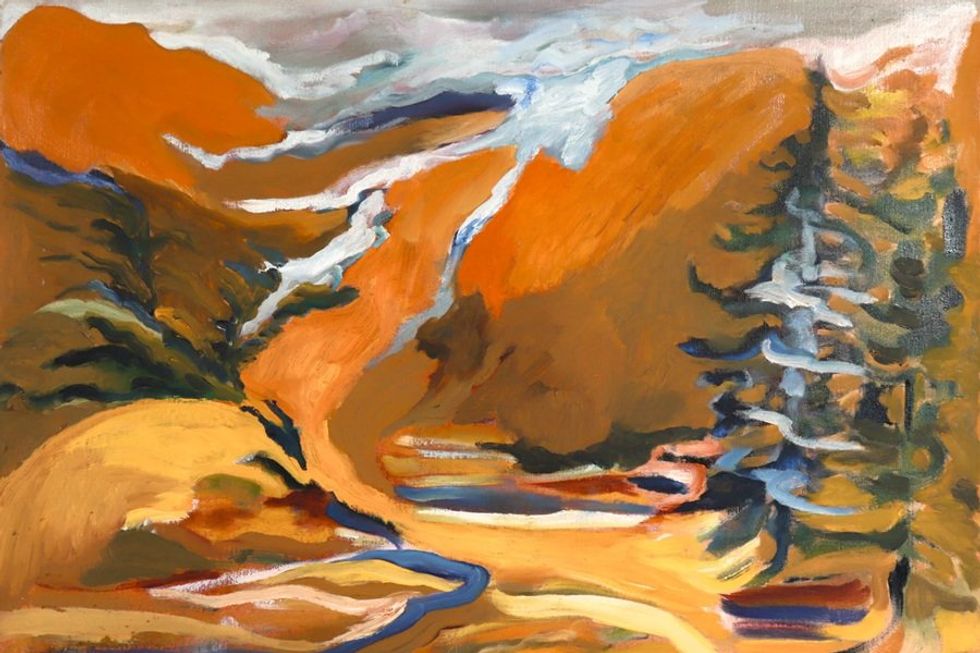
Alysanne McGaffey passed away in 2018, and last year, her surviving partner invited the Lost Art Salon to select work from their personal collection to continue reburnishing her legacy. They are now the “repository of her life’s work,” with around 200 pieces, about 20 of which are currently on display.
“We’re all still feeding off that renaissance era of the ‘40s and ‘50s, when San Francisco was a beacon for creativity,” says Delamater. “That’s why I still get so excited after 21 years to talk about these stories and to write new ones—I connect with the idea, the spirit of San Francisco.”
Neither McGaffey nor any of the other overlooked artists at the Lost Art Salon will ever again be forgotten.
// Walk-ins are welcome but reservations are encouraged Monday through Saturday from 10:30am to 5:30pm; 245 South Van Ness Ave. #303 (Mission), lostartsalon.com
